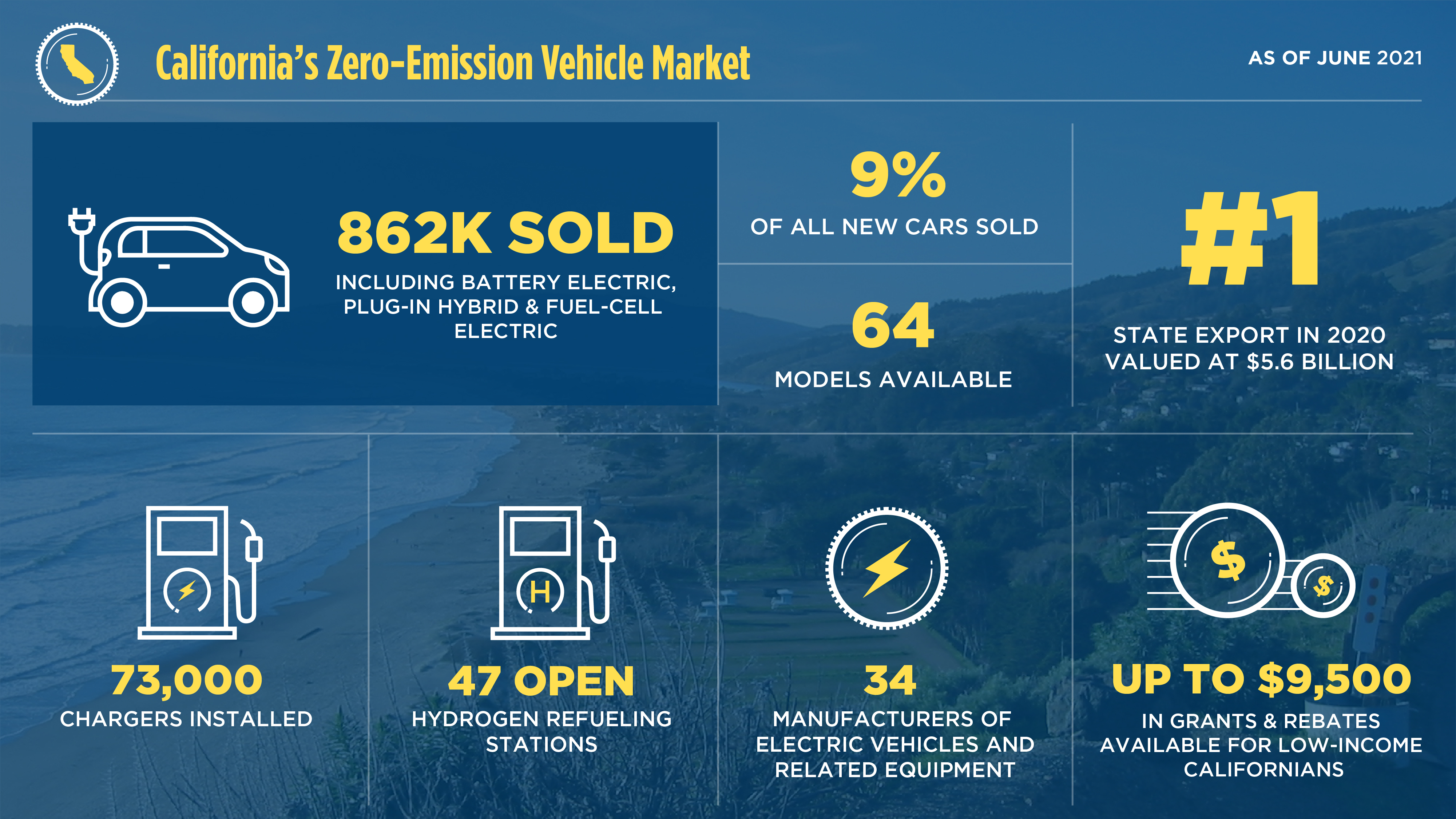For Immediate Release: June 9, 2021
Findings underscore importance of public investments, grid integration
SACRAMENTO – New analysis from the California Energy Commission (CEC) shows the state will need nearly 1.2 million public and shared chargers by 2030 to meet the fueling demands of the 7.5 million passenger plug-in electric vehicles (EVs) anticipated to be on California roads.
The inaugural Assembly Bill (AB) 2127 Electric Vehicle Charging Infrastructure Assessment examines charging needs to support Governor Gavin Newsom’s executive order requiring sales of all new passenger vehicles to be zero-emission by 2035 including battery electric and fuel-cell technologies. The initial assessment projects electric charging requirements to meet demand in 2030, and future reports will analyze 2035 needs.
In addition to the 1.2 million chargers for passenger vehicles, the CEC expects 157,000 chargers will be required by 2030 to support 180,000 medium- and heavy-duty electric trucks and buses also anticipated.
“We need to bridge the gap in electric vehicle charging or we won’t meet our goals for zeroing out harmful pollution from transportation. Building over a million chargers by 2030 is ambitious, but it’s also an opportunity to create good jobs and showcase California’s can-do spirit,” said CEC Commissioner Patty Monahan. “California isn’t backing down from this challenge because the health of our communities and planet is at stake. I’m proud that Governor Newsom is prioritizing zero-emission transportation through his proposed budget investments so we can do more now to meet consumer and market needs through strategic public investments that leverage private dollars.”
More than 73,000 public and shared chargers have been installed to date, with an additional 123,000 planned by 2025. These numbers fall short of the state’s goal of 250,000 chargers by 54,000 installations. The Governor’s proposed 2021–22 budget includes $500 million to help fill the gap and ensure essential infrastructure arrives as more Californians go electric.
“To make the evolution to zero-emission vehicles successful, California must have a robust charging infrastructure. The assessment shows we must now scale up our installation efforts, building out our charging network in order for electric vehicle adoption to be as seamless as possible. With our mission set, I’m committed to keep our state marching toward a greener future,” said Assemblymember Phil Ting (D-San Francisco), Chair of the Assembly Budget Committee and author of AB 2127.
The report notes that the California Electric Vehicle Infrastructure Project (CALeVIP), the state’s incentive program for EV chargers, is oversubscribed by hundreds of millions of dollars, demonstrating strong market and consumer demand for public funding. Incentives for fast chargers regularly sell out minutes after applications open.
The assessment also found that in 2030, electricity consumption from passenger EV charging could reach about 5,500 megawatts (MW) around midnight and 4,600 MW around 10 a.m. on a typical weekday, increasing electricity demand by up to 20–25 percent at those times.
To manage the new load and maximize EVs as an energy resource, the CEC emphasized the importance of pursuing vehicle-grid integration (VGI) technology. VGI enables drivers to program charging to make it easy to charge during hours when renewable generation is high, demand on the grid is low, and electricity is cheapest.
Other key recommendations from the report include:
- Ensuring equitable charger deployment throughout the state through targeted public investments.
- Supporting local efforts to prepare for transportation electrification, including community engagement, and land use planning and permitting.
- Prioritizing establishing common connector and communication standards for hardware and software.
- Supporting innovative charging solutions and financing mechanisms to foster market growth.
For details on the report, view the full report .
Related Links
###
About the California Energy Commission
The California Energy Commission is leading the state to a 100 percent clean energy future. It has seven core responsibilities: developing renewable energy, transforming transportation, increasing energy efficiency, investing in energy innovation, advancing state energy policy, certifying thermal power plants, and preparing for energy emergencies.
"electric" - Google News
June 10, 2021 at 04:02AM
https://ift.tt/3ivScpK
Report Shows California Needs 1.2 Million Electric Vehicle Chargers by 2030 - California Energy Commission
"electric" - Google News
https://ift.tt/2yk35WT
https://ift.tt/2YsSbsy
Bagikan Berita Ini















0 Response to "Report Shows California Needs 1.2 Million Electric Vehicle Chargers by 2030 - California Energy Commission"
Post a Comment